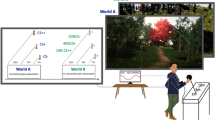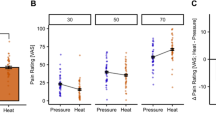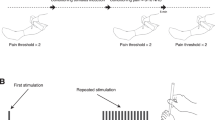Abstract
Introduction:
Pain is usually assessed by the interpretation of behavior, which can be subjective. Therefore, there is an ongoing search for more objective methods. Performance of skin conductance measurement as a pain assessment tool is variable, as some studies report low specificity and a low predictive value of the method. The aim of this pilot study was to test whether autoregulation of the skin temperature influences the skin conductance of pain-free infants.
Results:
Skin conductance was highly correlated with skin temperature in all subjects. Moreover, a significant change in all other vital parameters was observed on comparing before- and after-peak data.
Discussion:
These results indicate that sympathetic neural activity to maintain homeostasis (such as autoregulation of skin temperature) results in skin conductance peaks. Real-time evaluation of the sympathetic nervous system would be valuable for pain assessment. However, the technique should be better defined to increase both sensitivity and specificity for the measurement of pain before use in daily practice can be advocated.
Methods:
We included 11 infants, median (interquartile range (IQR)) age of 34 (13–76) d, who were admitted to the surgical high-care unit for monitoring after surgery. None was treated with opioids or sedatives, and observational pain scores were low.
Similar content being viewed by others
Log in or create a free account to read this content
Gain free access to this article, as well as selected content from this journal and more on nature.com
or
References
van Dijk M, de Boer JB, Koot HM, Tibboel D, Passchier J, Duivenvoorden HJ . The reliability and validity of the COMFORT scale as a postoperative pain instrument in 0 to 3-year-old infants. Pain 2000;84:367–77.
von Baeyer CL, Spagrud LJ . Systematic review of observational (behavioral) measures of pain for children and adolescents aged 3 to 18 years. Pain 2007;127:140–50.
Slater R, Fitzgerald M, Meek J . Can cortical responses following noxious stimulation inform us about pain processing in neonates? Semin Perinatol 2007;31:298–302.
Oberlander T, Saul JP . Methodological considerations for the use of heart rate variability as a measure of pain reactivity in vulnerable infants. Clin Perinatol 2002;29:427–43.
Storm H . Changes in skin conductance as a tool to monitor nociceptive stimulation and pain. Curr Opin Anaesthesiol 2008;21:796–804.
Hernes KG, Mørkrid L, Fremming A, Ødegården S, Martinsen ØG, Storm H . Skin conductance changes during the first year of life in full-term infants. Pediatr Res 2002;52:837–43.
Ledowski T, Bromilow J, Wu J, Paech MJ, Storm H, Schug SA . The assessment of postoperative pain by monitoring skin conductance: results of a prospective study. Anaesthesia 2007;62:989–93.
Wallin BG, Charkoudian N . Sympathetic neural control of integrated cardiovascular function: insights from measurement of human sympathetic nerve activity. Muscle Nerve 2007;36:595–614.
Rutter N . The dermis. Semin Neonatol 2000;5:297–302.
Hellerud BC, Storm H . Skin conductance and behaviour during sensory stimulation of preterm and term infants. Early Hum Dev 2002;70:35–46.
Ledowski T, Bromilow J, Paech MJ, Storm H, Hacking R, Schug SA . Skin conductance monitoring compared with Bispectral Index to assess emergence from total i.v. anaesthesia using propofol and remifentanil. Br J Anaesth 2006;97:817–21.
Hullett B, Chambers N, Preuss J, et al. Monitoring electrical skin conductance: a tool for the assessment of postoperative pain in children? Anesthesiology 2009;111:513–17.
Choo EK, Magruder W, Montgomery CJ, Lim J, Brant R, Ansermino JM . Skin conductance fluctuations correlate poorly with postoperative self-report pain measures in school-aged children. Anesthesiology 2010;113:175–82.
Ledowski T, Bromilow J, Paech MJ, Storm H, Hacking R, Schug SA . Monitoring of skin conductance to assess postoperative pain intensity. Br J Anaesth 2006;97:862–5.
Gjerstad AC, Wagner K, Henrichsen T, Storm H. Skin conductance versus the modified COMFORT sedation score as a measure of discomfort in artificially ventilated children. Pediatrics 2008;122:e848–53.
Ledowski T, Ang B, Schmarbeck T, Rhodes J . Monitoring of sympathetic tone to assess postoperative pain: skin conductance vs surgical stress index. Anaesthesia 2009;64:727–31.
Macefield VG, Wallin BG . The discharge behaviour of single sympathetic neurones supplying human sweat glands. J Auton Nerv Syst 1996;61:277–86.
Valkenburg AJ, Boerlage AA, Ista E, Duivenvoorden HJ, Tibboel D, van Dijk M . The COMFORT-behavior scale is useful to assess pain and distress in 0- to 3-year old children with Down’s syndrome. Pain 2011;152:2059–64.
Loggia ML, Juneau M, Bushnell MC . Autonomic responses to heat pain: Heart rate, skin conductance, and their relation to verbal ratings and stimulus intensity. Pain 2011;152:592–8.
Berde C, McGrath P . Pain measurement and Beecher’s challenge: 50 years later. Anesthesiology 2009;111:473–4.
Slater R, Cornelissen L, Fabrizi L, et al. Oral sucrose as an analgesic drug for procedural pain in newborn infants: a randomised controlled trial. Lancet 2010;376:1225–32.
Ambuel B, Hamlett KW, Marx CM, Blumer JL . Assessing distress in pediatric intensive care environments: the COMFORT scale. J Pediatr Psychol 1992;17:95–109.
Ista E, van Dijk M, Tibboel D, de Hoog M . Assessment of sedation levels in pediatric intensive care patients can be improved by using the COMFORT “behavior” scale. Pediatr Crit Care Med 2005; 6:58–63.
Milton F . The use of ranks to avoid the assumption of normality implicit in the analysis of variance. J Am Stat Assoc 1937;32:675–701.
Acknowledgements
We thank Anne van der Eijk for her technical advice.
Author information
Authors and Affiliations
Corresponding author
Rights and permissions
About this article
Cite this article
Valkenburg, A., Niehof, S., van Dijk, M. et al. Skin conductance peaks could result from changes in vital parameters unrelated to pain. Pediatr Res 71, 375–379 (2012). https://doi.org/10.1038/pr.2011.72
Received:
Accepted:
Published:
Issue date:
DOI: https://doi.org/10.1038/pr.2011.72
This article is cited by
-
The newborn infant parasympathetic evaluation index for acute procedural pain assessment in preterm infants
Pediatric Research (2021)
-
Normalized skin conductance level could differentiate physical pain stimuli from other sympathetic stimuli
Scientific Reports (2020)
-
Comparative evaluation of methods for the detection of electrodermal responses to multilevel intensity thermal noxious stimuli
Research on Biomedical Engineering (2019)
-
Skin conductance in neonates suffering from abstinence syndrome and unexposed newborns
European Journal of Pediatrics (2016)
-
Pain in Intellectually Disabled Children: Towards Evidence-Based Pharmacotherapy?
Pediatric Drugs (2015)



